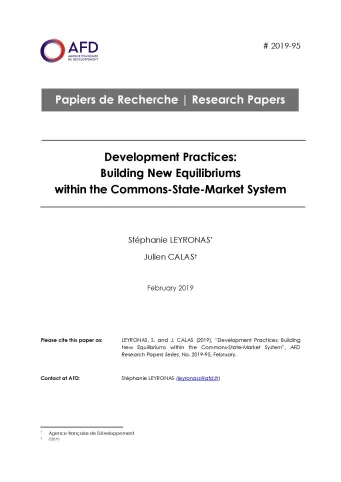Share the page
Development Practices: Building New Equilibriums within the Commons-State-Market System
Published on

For ten years (1998 – 2008), the Cambodian government rehabilitated the Prey Nup polders, a 90 km of earth dikes system protecting 10,500 hectares of rice paddies from seawater intrusion. This French Development Agency-funded project provides a clear illustration of an “administered commons”, where the administration aims to delegate its responsibility to new or previously-existing informal “communities” which it seeks to structure. This article relates the rehabilitation of the polders and explores the different commons-State-market systems that are generated. It brings to attention the weaknesses of this administered commons, and the tremendous challenges that it faces in order to turn into a “neo-commons”. This latter notion refers to an original creation in time which combines the typical requirements of traditional commons (community, resource, consolidation of management rules) with some degree of reinterpretation, giving way to hybrid governance forms that associate public administration and commodification. Based on this experience, the article re-examines the role of public authorities in promoting and supporting the emergence, consolidation and growth of neo-commons.
Useful Information
-
Authors
-
Coordinators
-
Edition
-
95
-
Number of pages
-
14
-
ISSN
-
2492 - 2846
-
Collection
-
Research Papers
